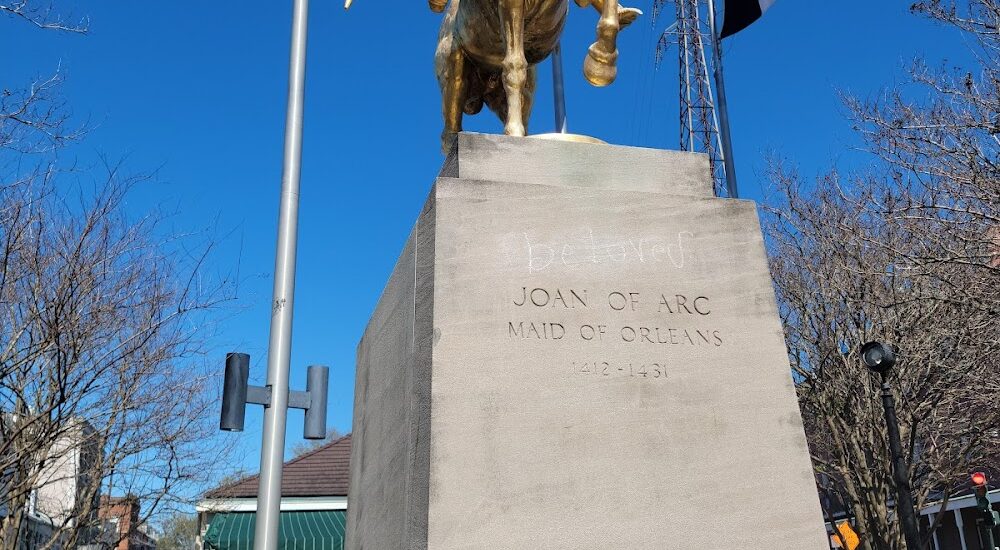Welcome to the statue of Joan of Arc, the ‘Maid of Orleans,’ located in the vibrant city of New Orleans, Louisiana. This statue not only marks a place of historical significance but also connects two cities with deep cultural ties.
Joan of Arc, born around 1412 in Domrémy, France, was a peasant girl who claimed to have received visions from saints, urging her to support Charles VII and free France from English domination during the Hundred Years’ War. At just 17, she led French troops to a pivotal victory at the Siege of Orléans in 1429, a feat that earned her the nickname ‘Maid of Orleans.’ Her successes were instrumental in the coronation of Charles VII at Reims, a significant morale booster for the French during a turbulent period.
Despite her victories, Joan was captured by Burgundian allies of the English in 1430, tried for heresy, and executed at the young age of 19. Her trial was later declared unjust, and she was canonized as a saint in 1920, becoming a symbol of French unity and courage.
The statue in New Orleans is a replica of Emmanuel Frémiet’s original crafted in the late 1800s. It was one of nine similar statues and found its way to New Orleans through a series of fortunate events. In 1958, a New York company acquired the statue and stored it in a warehouse. It wasn’t until 1964, with the intervention of French President Charles de Gaulle, that the statue was ransomed and finally erected in the city in 1972.
Initially placed at the Rivergate Convention Center, the statue has since moved to its current home at the Place de France in the French Market. Here, Joan stands tall, a testament to resilience and the enduring friendship between New Orleans and France.
The statue of Joan of Arc is more than a historical landmark; it is a symbol of perseverance and strength, mirroring the spirit of New Orleans itself—a city known for its rich history, cultural diversity, and indomitable spirit.






